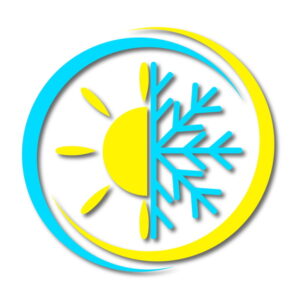Cool weather means it’s time to shift your heat pump into heating mode. The ease with which you can change a heat pump from one mode to another is one of the biggest advantages of having a heat pump in the first place.
Still, what if your heat pump won’t turn to heating mode? It does happen, and our team has worked with many heat pumps, so we’re familiar with how this problem can occur. We’ve put together this guide to help you understand what’s going on and if you need heat pump repair in Glenwood, GA.
Understanding the Reversing Valve
One of the most important components of your heat pump is the reversing valve. This small but crucial part allows the system to switch between heating and cooling modes by changing the direction of refrigerant flow. When you switch from cooling to heating mode, the reversing valve reroutes the refrigerant so it absorbs warmth from the outdoor air and brings it inside. However, if this valve is damaged or stuck, it can prevent the heat pump from switching modes.
Here’s how the reversing valve might malfunction:
- Stuck Position: Over time, reversing valves can get stuck, especially if they haven’t been maintained or used in heating mode for several months.
- Electrical Issues: The solenoid coil that powers the valve may fail, preventing the valve from activating.
- Low Refrigerant: Insufficient refrigerant can also affect the valve’s function, making it difficult for the system to change modes.
Since a reversing valve malfunction typically requires a professional to diagnose the issue and either repair or replace the valve, it’s a good idea to call us if you think this is the issue.
Other Possible Problems
Thermostat
If your thermostat isn’t working properly, it might not be sending the correct signals to the heat pump. This could happen because of incorrect settings, dead batteries, or faulty wiring.
Low Refrigerant Levels
Your heat pump relies on refrigerant to transfer heat. If refrigerant levels are too low, the system may struggle to pull warmth from the outdoor air, effectively preventing it from shifting into heating mode. A refrigerant leak can also damage other components of the heat pump, leading to a full breakdown. You must have professionals to fix this problem.
Malfunctioning Defrost Cycle
During winter, a heat pump’s outdoor unit can collect frost, which needs to be periodically cleared for efficient operation. The system’s defrost cycle helps melt any ice buildup on the coils. However, if the defrost cycle malfunctions, it may trigger heating issues by keeping the system in cooling mode longer than necessary.
Dirty or Blocked Refrigerant Coils
The heat pump’s coils absorb and release heat to allow it to do its job. When coils become dirty or blocked by debris, they can hinder the heat pump’s ability to switch modes effectively. Dirty coils reduce efficiency, causing the system to work harder and potentially get stuck in a single mode.
Electrical or Control Board Issues
Your heat pump’s control board coordinates the various functions of the system, including the switching between heating and cooling modes. If there’s an electrical issue or the control board malfunctions, the system may not receive the signals it needs to switch to heating mode.
If you have a heat pump problem of any type, please contact our team right away for solutions!


